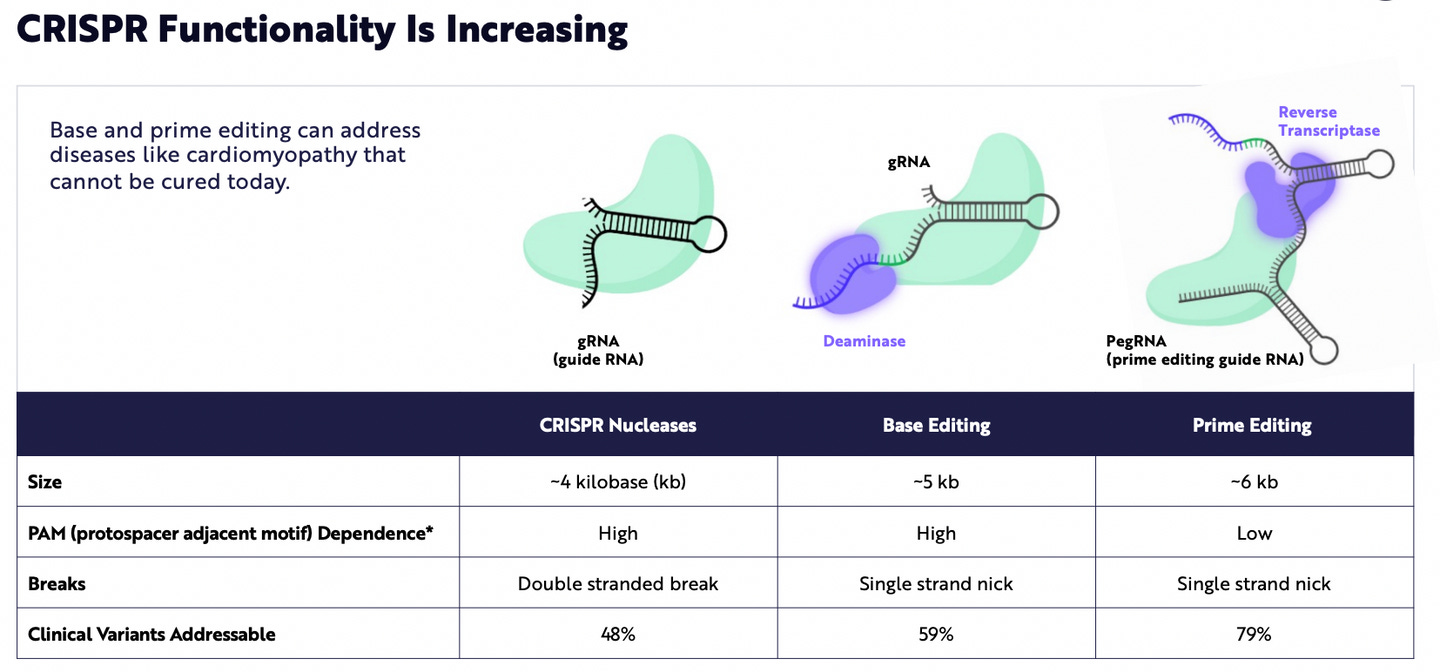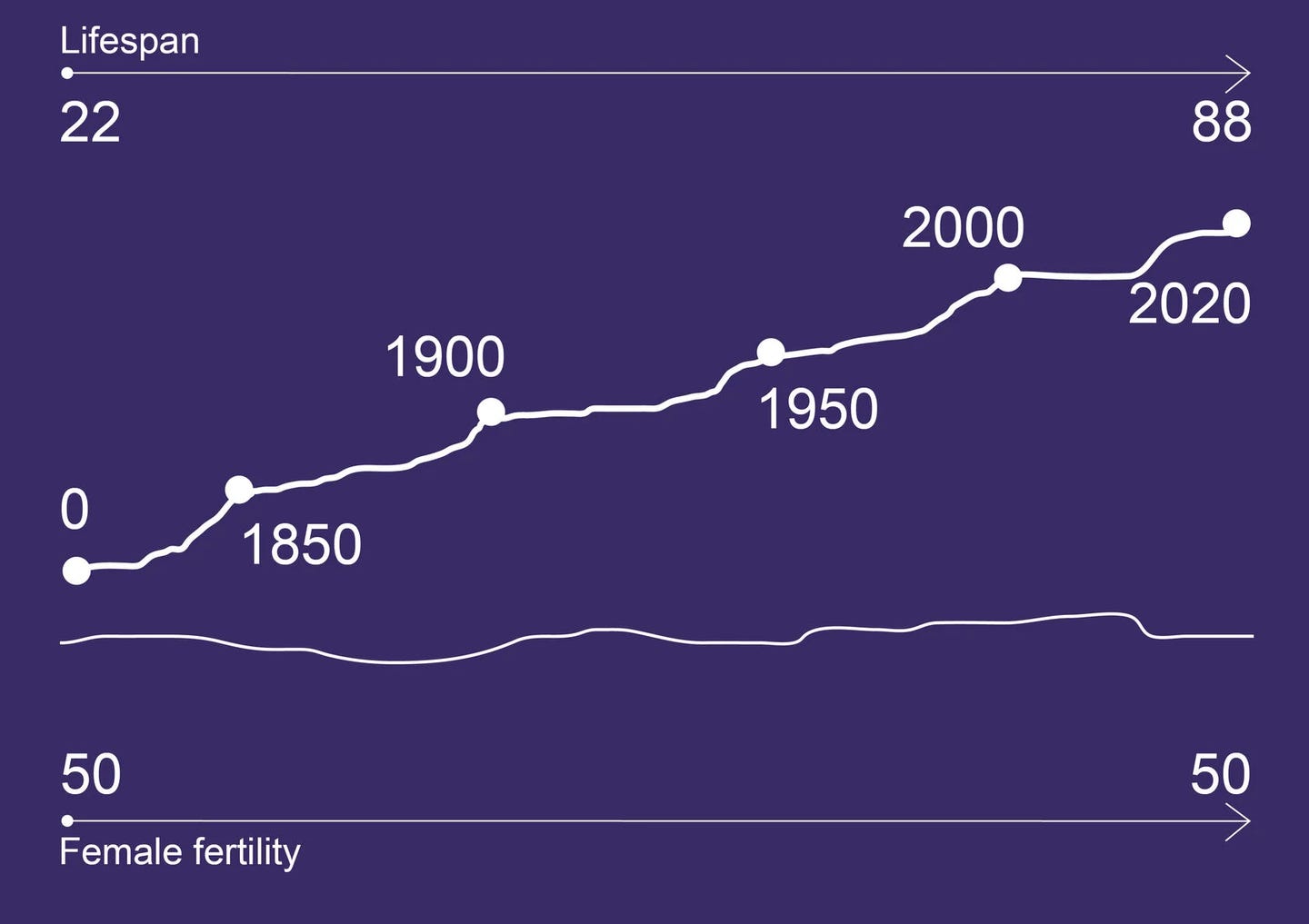🧬📖 Excellent reads: CRISPR explained, biotech decacorns, bear market, GRAIL
Collection of essays worth your time to read — with a sprinkle of commentary by yours truly
Hi friends 👋
Welcome to Health & Wealth — your weekly source of the latest health research and biotech trends. I focus on writing deep dives on biotech companies and health optimization strategies. But today, I’m highlighting reads that made me go, "huh, I never thought of that before" or "this is so good that I wished I had written it, but happy this already exists in the world." Here are a few — happy reading!
🧬 On reading and writing DNA
CRISPR explained — and the CRISPR market landscape
If you’re remotely interested in CRISPR stocks, this science primer by @Biotech2k1 is a must-read.
While you might have heard snippets about gene editing systems, most people would struggle to articulate the differences between CRISPR nucleases, base editing, and prime editing — and why these technological differences/limitations matter to patients.
This explainer article lays out the science comprehensively yet concisely to anyone curious and willing to learn.
Once you have a solid understanding of the science, check out this high-level overview of the CRISPR market — and how each company fits in the landscape.
Relevant to those looking at $BEAM, $CRSP, $NTLA, $CRBU, $VERV, $GRPH, $EDIT and others.
On a side note: @Biotech2k1 is one of the most prescient and level-headed voices on Twitter about biotech investing I’ve found — a tremendous follow.
Illumina: Durability of Sequencing Growth
Illumina (ILMN) is no doubt a giant in genomics. Over the last 20 years, Illumina’s sequencing technology provided the pick and shovel for a gold rush of genetic innovation.
But in August 2021, Illumina raised eyebrows by acquiring GRAIL for $8 billion — five years after selling over half its stake in GRAIL at a much lower valuation. Illumina also went ahead with the acquisition anyway, despite legal challenges and objections from EU regulators and the Federal Trade Commission (FTC). So why did Illumina close such a deal?
This piece by Fundamental Diagnosis postulates why Illumina made such a desperate bid for GRAIL:
“At $2 per gigabase (an ~80% price decline from 2020 levels), the entire annual market of 177 million tests for liquid biopsy cited by GRAIL would be worth only $1.77 billion to the sequencing provider, assuming 5 gigabases of data per test.
To capture the value of the liquid biopsy market that investors are counting on, Illumina realized it needs to receive the value of the test itself, not just the inputs.”
This is part 4 of a 6-part series on Illumina. I learned a lot about the sequencing market by reading through these pieces.
📉 On the biotech market
Here’s What Happened to Biotech This Year
Biotech is the worst performing of any 11 S&P 500 sectors in 2021. What happened, and why is this abysmal trend continuing into 2022?
Brad Loncar describes some of the macro trends that led us to today. Frothy valuations, preclinical biotech IPOs and SPAC mergers galore, uncertainty from the FTC slowing down mergers and acquisitions contributed to sector-wide dislocations.
When satire reflects reality a bit too closely:
Anatomy of a decacorn: tech vs. biotech
How do the best-returning biotech startup investments differ from their tech counterparts?
Richard Murphey studies the outliers and how different patterns influence VC investment strategies in tech vs. biotech.
Valuations numbers may have changed since the post was published, but still interesting and relevant.
🖖 On extending healthspan
The Average American Would Pay $242,000 For One Extra Year of Good Health
How much are you willing to pay for more time in better health?
On an individual level — research indicates that the average American would pay $242,000 for one extra year of good health.
On a societal level — if average US life expectancy were to increase by one year, that’s estimated to be worth $37 trillion in net present value terms.
A fascinating take on the economic value of addressing aging as a disease. Worth reading if you’re skeptical of longevity efforts.
Biotech: All Eyes on Ovarian Health and Biology
Here’s an overlooked fact: ovaries age up to 5x faster than any organ in the body.
“While the lifespan of humans has nearly doubled in the last two centuries, the average age at which female fertility declines and menopause takes place has remained almost consistent since accurate medical records began in the 1800s.”
— Gameto, a female reproductive longevity company
Several companies like Gameto, Oviva, Forendo, Celmatix are aiming to improve ovarian health by targeting PCOS and endometriosis and delaying infertility and even menopause.
I view reproductive longevity as a moonshot project that would be an immensely valuable breakthrough if possible. I’m curious to dive deeper and may write a future piece on what I learn.
Enjoyed these handpicked reads?
Check out my excellent reads fall 2021 for more perspective-shifting pieces
Follow me @healthwealthgen to get the latest on what I’m reading
If you’re new, subscribe for more from me:
Until next time!
Christina










